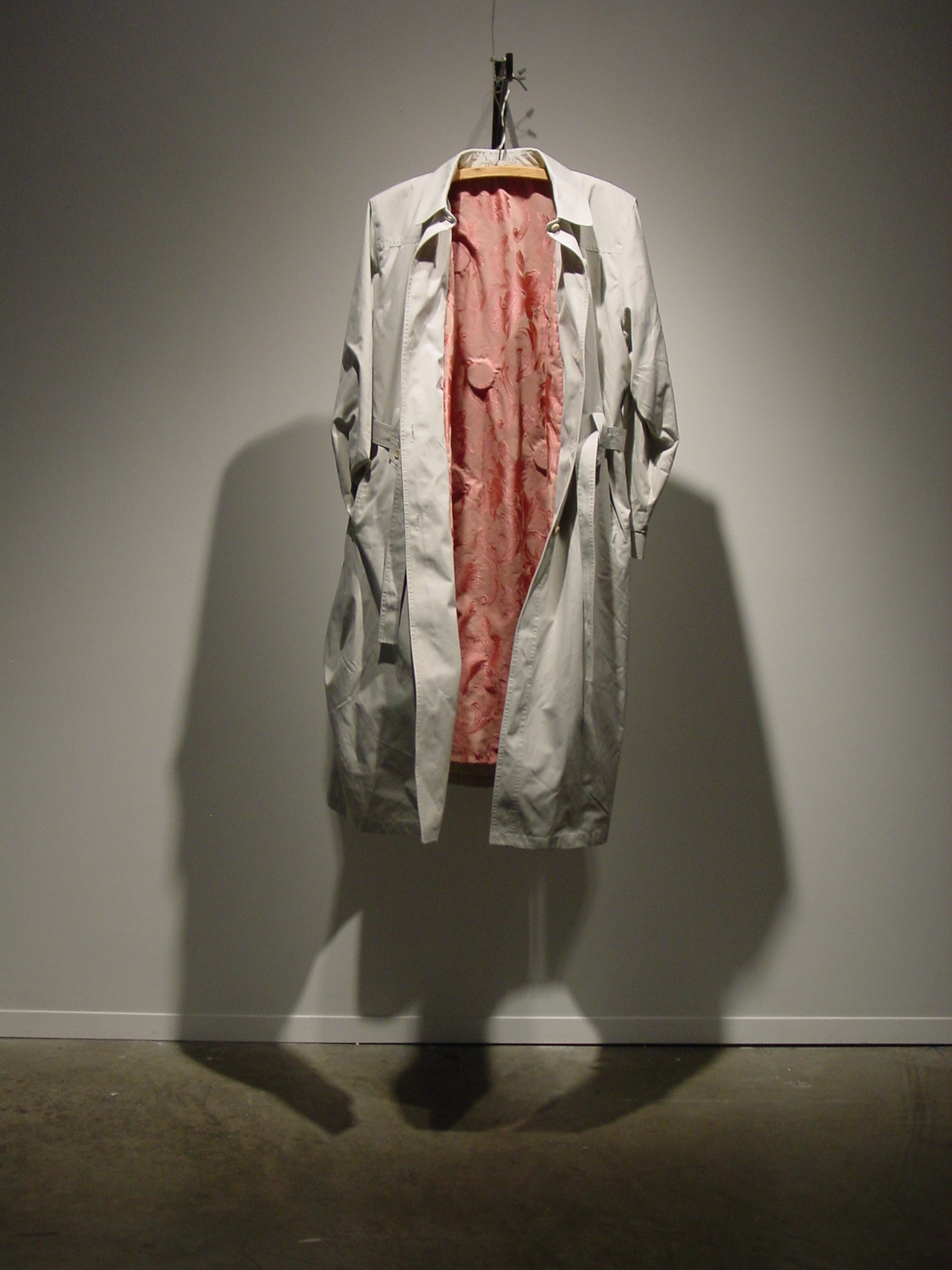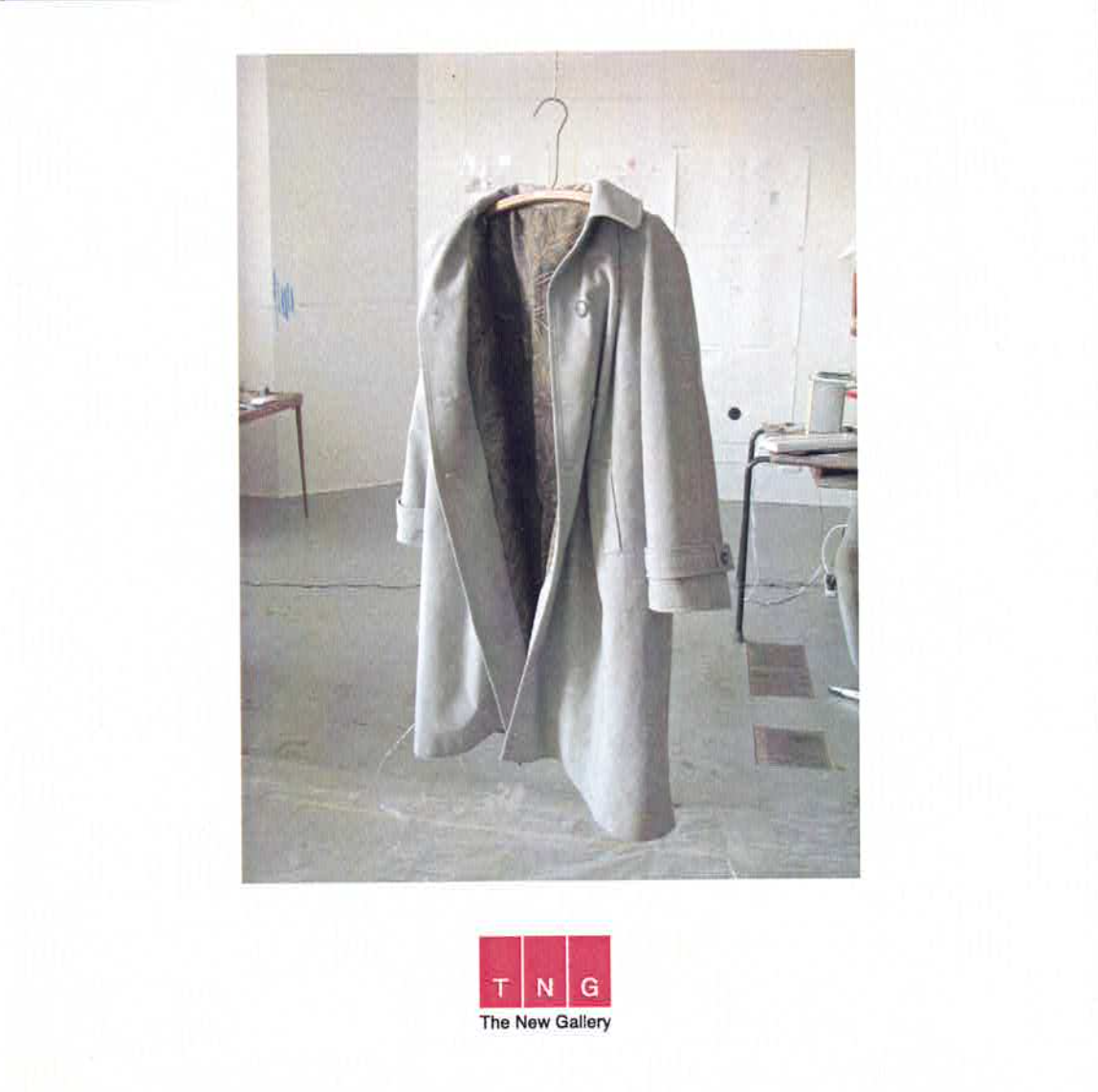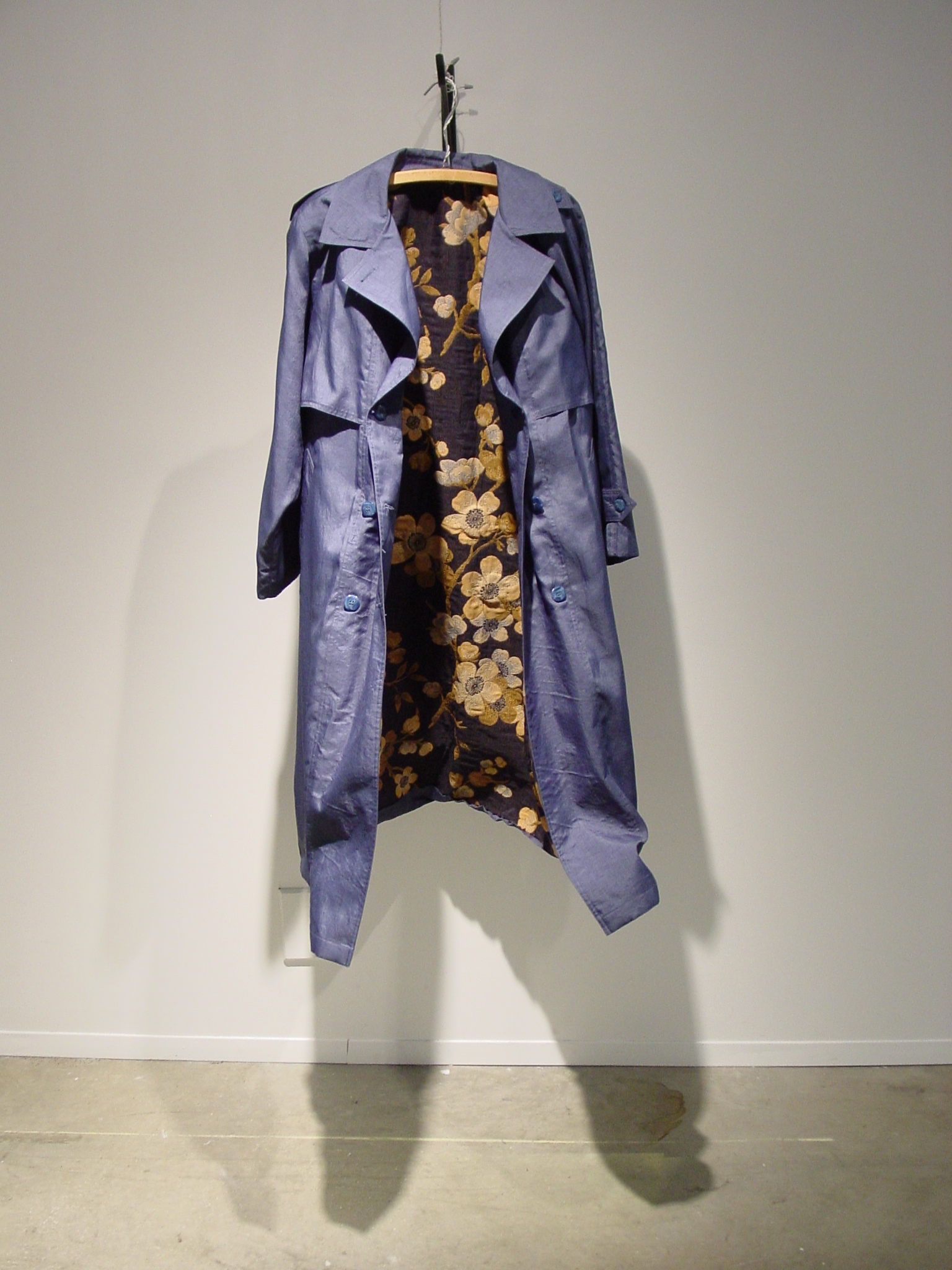
(im)permeable
Annie Martin
May 16 - June 21, 2008

I enjoy the paradox of ‘You Are Here’ signs. While my subaudible reading voice mumbles over the syllables, it feels as though I am projecting myself onto the illusional space of the map in front of me. But the frontality of vision, as compared to the surrounding and temporal nature of sound, fixes a clear sense of me, the subject, reading the object in front of me, the sign. But if I voice the phrase aloud, the sound reflects and returns seemingly in sync with the emanation. the boundary between interior and exterior becomes permeable.
Brandon LaBelle has argued that much sound art has strong ties to site-specific practice of the late 1960s and 1970s in that it has the ability to call attention to the context in which it is situated. (i) Eau Claire Market, not a far cry from Baudelaire’s description of the shopping mall of his day as a passageway “lined with the most elegant of shops, so that such an arcade is a city, even a world in miniature” (ii) brings to mind the meandering nature of the flaneur, that “deliberately aimless pedestrian unencumbered by any obligation or sense of urgency... a shopper, with no intention to buy, enjoying the incomparable privilege of being herself and someone else as she sees fit”.(iii)
The flaneur and the sonorous items on display are sites of contradiction in these surroundings. The second-hand overcoats lined with floral patterns and shifting sounds are ghostly and anonymous. They imply figures that are both there and not there. And the question arises, where are the sounds coming from? And what is it that prompts us to visually locate and fix sources of sound?
Annie Martin has set up microphones in various places throughout the market allowing a live mix of audio signals, traveling through the filtering of wires and speakers, to constantly arrive and intermingle at the gallery site of display. Here we have a unique blending of the aleatory (iv) with the acousmatic.(v) The microphones appropriate found phenomena; unable to listen or look away, the un-orchestrated chance occurrences of sound within the seemingly public space of the mall are treated with indifference. All sounds become part of this unplanned composition. But they are also translated through technology; no longer tied to their sources of sound, they refer to both their dislocated ‘selves’ and the context, including location, in which this dislocation occurs. Further, the speakers reshape what is heard by allowing certain frequencies to be enhanced while others are forced to disappear. Not surprisingly, our imagination conjures up the possibility of recordings of sounds in nature: waves lapping at the sand of a beach, wind sifting through the leaves of trees, perhaps a nearby waterfall hidden away in a rocky canyon...
Sound destabilizes the fixed visual boundaries of architecture. Sound reunites the temporal to the spatial in that it exists not so much as an object or body, but among objects and bodies, reflecting and returning during a given period of time. If Sound was to be a literary character it would be the narrator, protagonist, and audience, all at once. The tympanic mechanisms of microphones and speakers double these constant relocations across boundaries. As viewers, or, more properly, participants, we are implicated through our strange new interaction with these bodiless figures. No longer eyeing with the intent to purchase, we lend an ear to the interior of these empty vessels. No longer background music with an intent to lull, the bath of sound becomes material, tactile, a kind of (im)permeable second skin.
- Denton Fredrickson
(i) Brandon Labelle, Background Noise: Perspectives on Sound Art (New York, NY: Continuum, 2006), introduction.
(ii) Charles Baudelaire. The Flowers of Evil. trans. C.F. MacIntyre (New York, NY: Directions, 1989), p.36-37
(iii) Heather Marcelle Crickenberger, The Arcades Project Project (2005)
<http://www.thelemming.com/lemming/dissertation-web/about/story.html>
(iv) For an insightful discussion on aleatory music see Craig Adcock’s article: Craid Adcock ‘Marcel Duchamp’s Gap Music. Operations in the Space between Art and Noise’, in Douglas Hagn and Gregory Whitehead(eds.), Wireless Imagination, Sound, Radio and the Avant-Garde (MIT Press: Cambridge MA, 1992).
(v) Brandon LaBelle compares the work of John Cage with that of Pierre Schaeffer’s ideas of musique concrete and the acousmatic in: Brandon Labelle, Background Noise: Perspective on Sound Art (New York, NY: Continuum, 2006), p.24-34.
Annie Martin is a multidisciplinary artist living and working in Lethbridge, Alberta. Her art practice over the past 15 years is characterized by her parallel interests in sensory sensitivity and reading at the limits of signification, and demonstrates an evolving relationship to materials and media. Recently, she has engaged with ideas of place through multiple senses, exploring the ethical dimension of perceptual sensitivity and pleasure, the blending of the senses, and the formation of a sense of self and locality through perception. Martin’s current projects include site-specific live audio installations, listening walks, audio multiples for circulation, video, textile installation and drawing. Her work has been exhibited in galleries and sites across Canada and internationally. She is Assistant Professor in the department of Art at the University of Lethbridge.



